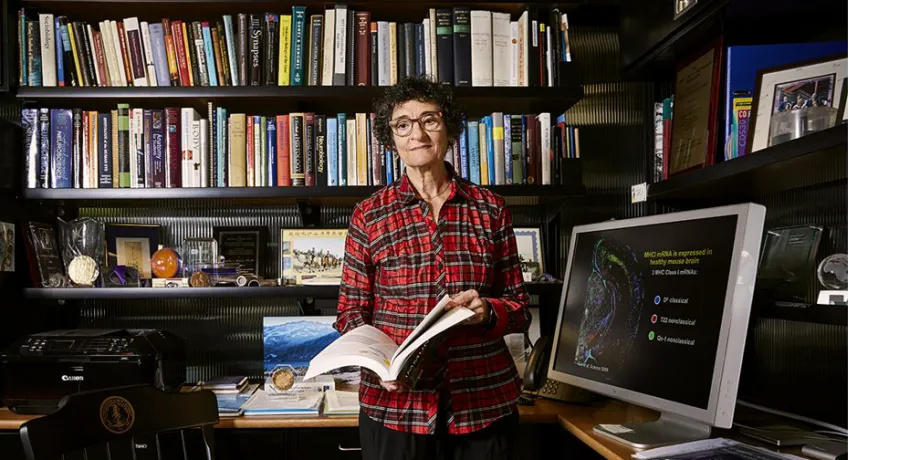
Photo by Gabriela Hasbun for Nature: Carla Shatz is a biologist and neurobiologist and director of the Stanford Bio-X inter-
disciplinary center at Stanford University in California.
Nature Magazine - January 14, 2020
This office is my hut, where I do lots of brainstorming to go over laboratory members’ experiments and results. It’s where ideas get put into action or put down onto paper. People say it’s cosy.
Everyone would call me a compulsive person. My desk is clean, and so are my desk drawers. The order of my desk symbolizes an orderly mind. Because of that, my mind has room to notice things that don’t fit the pattern. This is partly why my lab has been able to think outside the box and has worked on themes that don’t fit the expected.
I am a neurobiologist who studies how mammalian brain circuits are tuned by experience and neural activity during development. People thought these circuits should all be hard-wired, so we were very surprised to find years ago that the adult patterning of a visual circuit in the brain is not there initially in the embryo. More recently, we got another shock when we found that these circuits are remodelled by molecules that are typically thought of as components of the immune system. Now, we are working on how these immune molecules are somehow being used by neurons to stabilize or prune their synapses, or connections.
Above my computer are pictures of my ‘labsters’, as I call my lab members from over the years, and some of my mentors. There’s a special one of me and Eve Marder when we shared the 2016 Kavli Prize in Neuroscience, along with that year’s seven other prizewinners in various fields — all men in tuxedos. I like mixing the plaques of recognition with my lab family, because you don’t have one without the other.
We control so little in life, and it gives me a kind of perverse pleasure to have my office under control. Generally, my lab members are amused by my neat-freak mentality. But the best science is done when people are extremely careful and precise.
Nature 577, 442 (2020)
doi: 10.1038/d41586-020-00063-y

